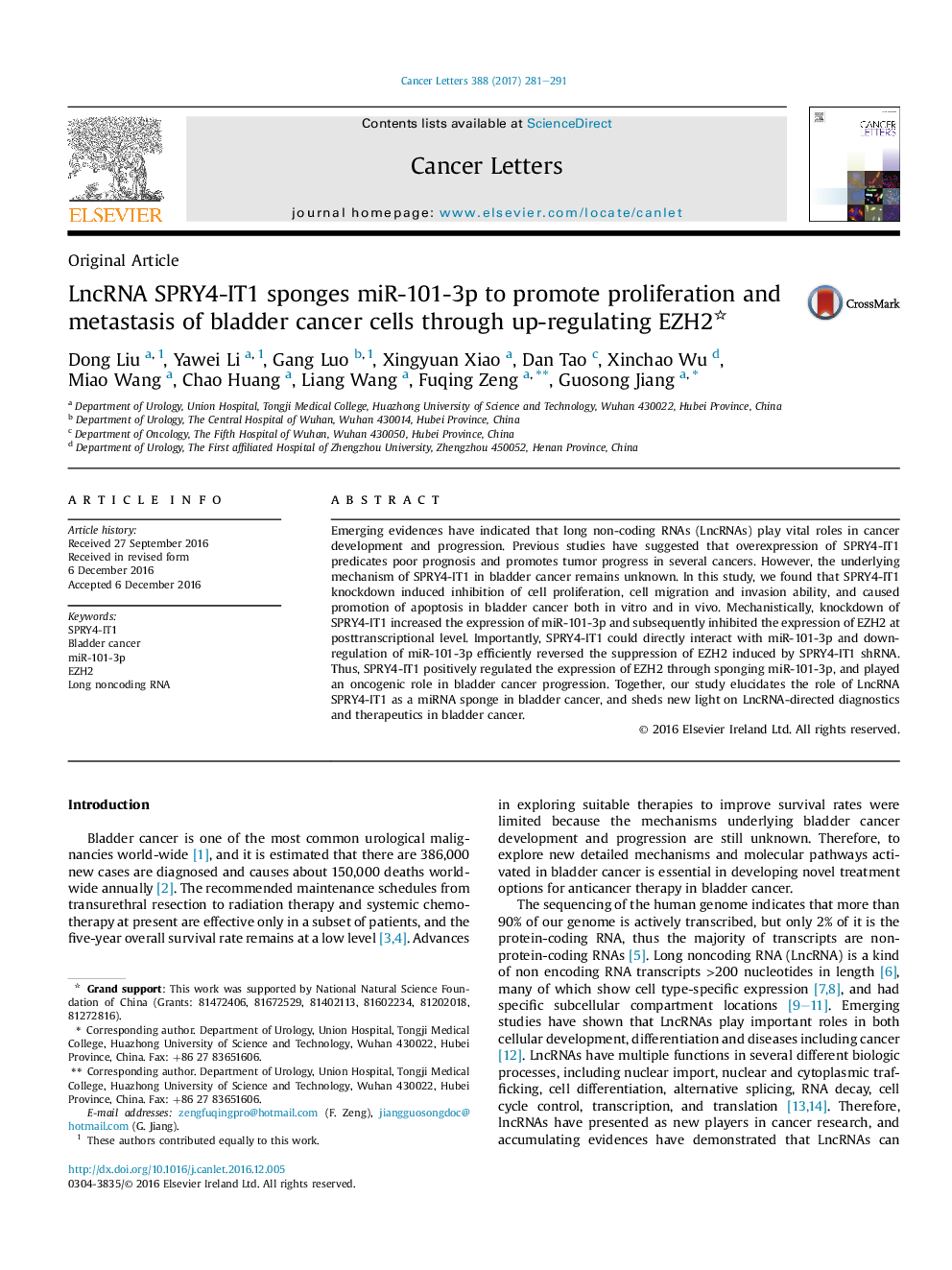| Article ID | Journal | Published Year | Pages | File Type |
|---|---|---|---|---|
| 5525695 | Cancer Letters | 2017 | 11 Pages |
â¢SPRY4-IT1 promotes tumor proliferation and metastasis in bladder cancer cells.â¢SPRY4-IT1 functions as an miRNA sponge for miR-101-3p to de-repress the EZH2 expression.â¢The SPRY4-IT1/miR-101-3p/EZH2 axis contributes to bladder cancer proliferation and metastasis.â¢GA treatment induces repression of SPRY4-IT1 and could function as a SPRY4-IT1 inhibitor.
Emerging evidences have indicated that long non-coding RNAs (LncRNAs) play vital roles in cancer development and progression. Previous studies have suggested that overexpression of SPRY4-IT1 predicates poor prognosis and promotes tumor progress in several cancers. However, the underlying mechanism of SPRY4-IT1 in bladder cancer remains unknown. In this study, we found that SPRY4-IT1 knockdown induced inhibition of cell proliferation, cell migration and invasion ability, and caused promotion of apoptosis in bladder cancer both in vitro and in vivo. Mechanistically, knockdown of SPRY4-IT1 increased the expression of miR-101-3p and subsequently inhibited the expression of EZH2 at posttranscriptional level. Importantly, SPRY4-IT1 could directly interact with miR-101-3p and down-regulation of miR-101-3p efficiently reversed the suppression of EZH2 induced by SPRY4-IT1 shRNA. Thus, SPRY4-IT1 positively regulated the expression of EZH2 through sponging miR-101-3p, and played an oncogenic role in bladder cancer progression. Together, our study elucidates the role of LncRNA SPRY4-IT1 as a miRNA sponge in bladder cancer, and sheds new light on LncRNA-directed diagnostics and therapeutics in bladder cancer.
